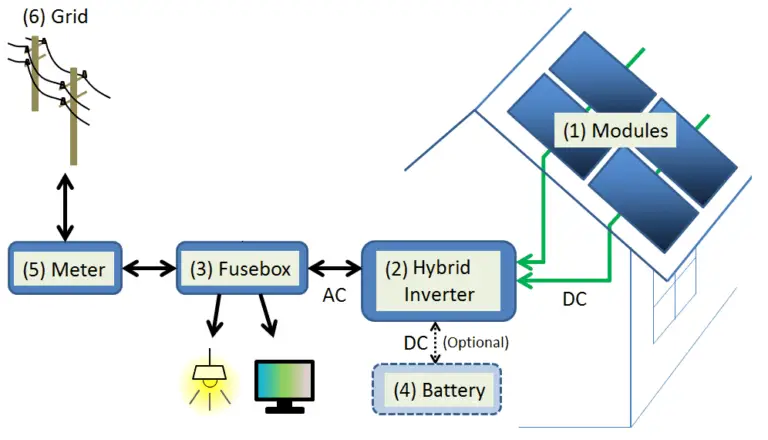Anomaly Detection in Machine Learning: Methods and Applications
Anomaly detection in machine learning is the analysis and visualization of data either retrospectively or in real-time, to identify and/or rectify unfavorable deviations in the data, also known as outliers.
This article discusses anomaly detection in machine learning, as outlined below;
-Anomaly Detection in Machine Learning Examples
-Applications of Anomaly Detection in Machine Learning
Anomaly Detection Methods
Anomaly detection methods are; rule-based, cluster-based, pattern-matching and density-based anomaly detection.
Although pattern-matching is identified as a distinct method, all methods of anomaly detection in machine learning, involve some form of pattern matching [9].
Alternatively, pattern-matching can be seen as one of the broad categories in which we can classify the methods of anomaly detection in machine learning [7].
With this said, the three main approaches to anomaly detection in machine learning are; rule-based, cluster-based and density-based detection approaches.
The existence of multiple methods or techniques is the reason why anomaly detection in machine learning is a versatile practice that is applicable in various fields [4].
A brief discussion of each of the anomaly detection methods or approaches, is given below;
1). Rule-based Anomaly Detection (as one of the Anomaly Detection Methods in Machine Learning)
Rule-based anomaly detection in machine learning, is based on a simple concept whereby data is analyzed to identify deviations from existing rules in the functionality algorithm.
The method can utilize multiple rules for its analysis, including those concerned with data mining, collection, analysis, processing and output. Available datasets are then scanned, so that any outcome(s) that deviates from what is predictable or expected based on the rules, is flagged as an anomaly.
Rule-based anomaly detection is a very powerful and yet simple approach, especially for integrated Internet of Things (IoT) systems and others that utilize real-time data [3].
2). Cluster-based Anomaly Detection
Cluster-based (or clustering-based) approach for anomaly detection is a method that groups data into definitive sets based on predictable characteristics, and then uses this grouping to easily identify anomalous data points.
Clustering can be used for anomaly detection in a similar manner as rule-based analysis is used. But rather than utilize basic rules when evaluating datasets, it utilizes the observable trends in the datasets themselves.
The clustering-based anomaly detection method is closely linked to nearest-neighbor data analysis technique, which serves a similar purpose to detect inconsistencies and repair them for improved performance.
A major advantage of this approach is its lack of need for any preliminary training of the artificial intelligence system [1].
Cluster-based anomaly detection treats data in a collective manner, and seeks for outliers from the regular trend or shape of multivariate dataset-plots [5] [2].

3). Density-based Anomaly Detection (as one of the Anomaly Detection Methods in Machine Learning)
Density-based anomaly detection is a variant form of clustering detection. that is unsupervised, and makes use of spatial distribution trends to recognize anomalies in datasets [6].
It specifically makes use of K-Nearest Neighbor (K-NN) algorithms to predict the normal distribution of data points, so that any deviation from the norm is flagged as an anomaly [9].
In density-based anomaly detection, data points are classified into two main categories, which are; inliers and outliers, where (in most cases) the inliers are normally distributed and the outliers represent anomalous points [8].
Anomaly Detection in Machine Learning Examples
Examples of anomaly detection in machine learning are;
1). Rule-based retrospective anomaly detection
2). Real-time outlier recognition using deep learning and neural network technologies
3). Data visualization based on clustering for unusual trend observation
These examples represent the various possible conditions of anomaly detection implementation in machine learning.
Applications of Anomaly Detection in Machine Learning
Applications of anomaly detection in machine learning are;
1). Medical data analysis
2). Financial fraud detection
3). Data security
4). Quality assessment in sustainable manufacturing
5). Environmental monitoring
6). Predictive maintenance of systems
Conclusion
Anomaly detection machine learning is the act and process of identifying deviations from the expected outcome of operations, by analyzing data either singly as points or collectively as clusters.
Anomaly detection methods are;
1. Rule-based Anomaly Detection
2. Cluster-based Anomaly Detection
3. Density-based Anomaly Detection
Examples of anomaly detection in machine learning are; rule-based retrospective anomaly detection, real-time outlier recognition, and data visualization based on clustering.
Applications of anomaly detection in machine learning are; medical data analysis, financial fraud detection, data security, quality assessment, environmental monitoring, and predictive maintenance.
References
1). Amer, M.; Goldstein, M. (2012). "Nearest-Neighbor and Clustering based Anomaly Detection Algorithms for RapidMiner." Proceedings of the 3rd RapidMiner Community Meeting and Conferernce (RCOMM 2012). Available at: https://doi.org/10.5455/ijavms.141. (Accessed 3 February 2023).
2). Christy, A.; Meeragandhi, G.; Vaithvasubramanian, S. (2015). "Cluster Based Outlier Detection Algorithm for Healthcare Data." Procedia Computer Science 50. Available at: https://doi.org/10.1016/j.procs.2015.04.058. (Accessed 3 February 2023).
3). Duffield, N.; Haffner, P.; Krishnamurthy, B.; Ringberg, H. (2009). "Rule-Based Anomaly Detection on IP Flows." Proceedings - IEEE INFOCOM. Available at: https://doi.org/10.1109/INFCOM.2009.5061947. (Accessed 3 February 2023).
4). Koren, M.; Koren, O.; Peretz, O. (2022). "A Procedure for Anomaly Detection and Analysis." Engineering Applications of Artificial Intelligence 117(2). Available at: https://doi.org/10.1016/j.engappai.2022.105503. (Accessed 2 February 2023).
5). Li, J.; Izakian, H.; Pedrvcz, W.; Jamal, I. (2020). "Clustering-based anomaly detection in multivariate time series data." Applied Soft Computing 100(4):106919. Available at: https://doi.org/10.1016/j.asoc.2020.106919. (Accessed 3 February 2023).
6). Lin, C. H.; Hsu, K. C.; Johnson, L. R.; Luby, M.; Fann, Y. C. (2019). "Applying density-based outlier identifications using multiple datasets for validation of stroke clinical outcomes." Int J Med Inform. 2019 Dec;132:103988. Available at: https://doi.org/10.1016/j.ijmedinf.2019.103988. (Accessed 3 February 2023).
7). Madhuri, S.; Macigi, U. R. (2018). "Anomaly Detection Techniques." SSRN Electronic Journal. Available at: https://doi.org/10.2139/ssrn.3167172. (Accessed 2 February 2023).
8). Rehman, M. U.; Khan, D. M.; Saher, N.; Shahzad, F. (2021). "A Novel Density-based Technique for Outlier Detection of High Dimensional Data Utilizing Full Feature Space." Information Technology and Control 50(1):138-152. Available at: https://itc.ktu.lt/index.php/ITC/article/view/25588. (Accessed 3 February 2023).
9). Thudumu, S.; Branch, P.; Jin, J.; Singh, J. J. (2020). "A comprehensive survey of anomaly detection techniques for high dimensional big data." Springer, Journal of Big Data 7(1). Available at: https://doi.org/10.1186/s40537-020-00320-x. (Accessed 2 February 2023).

